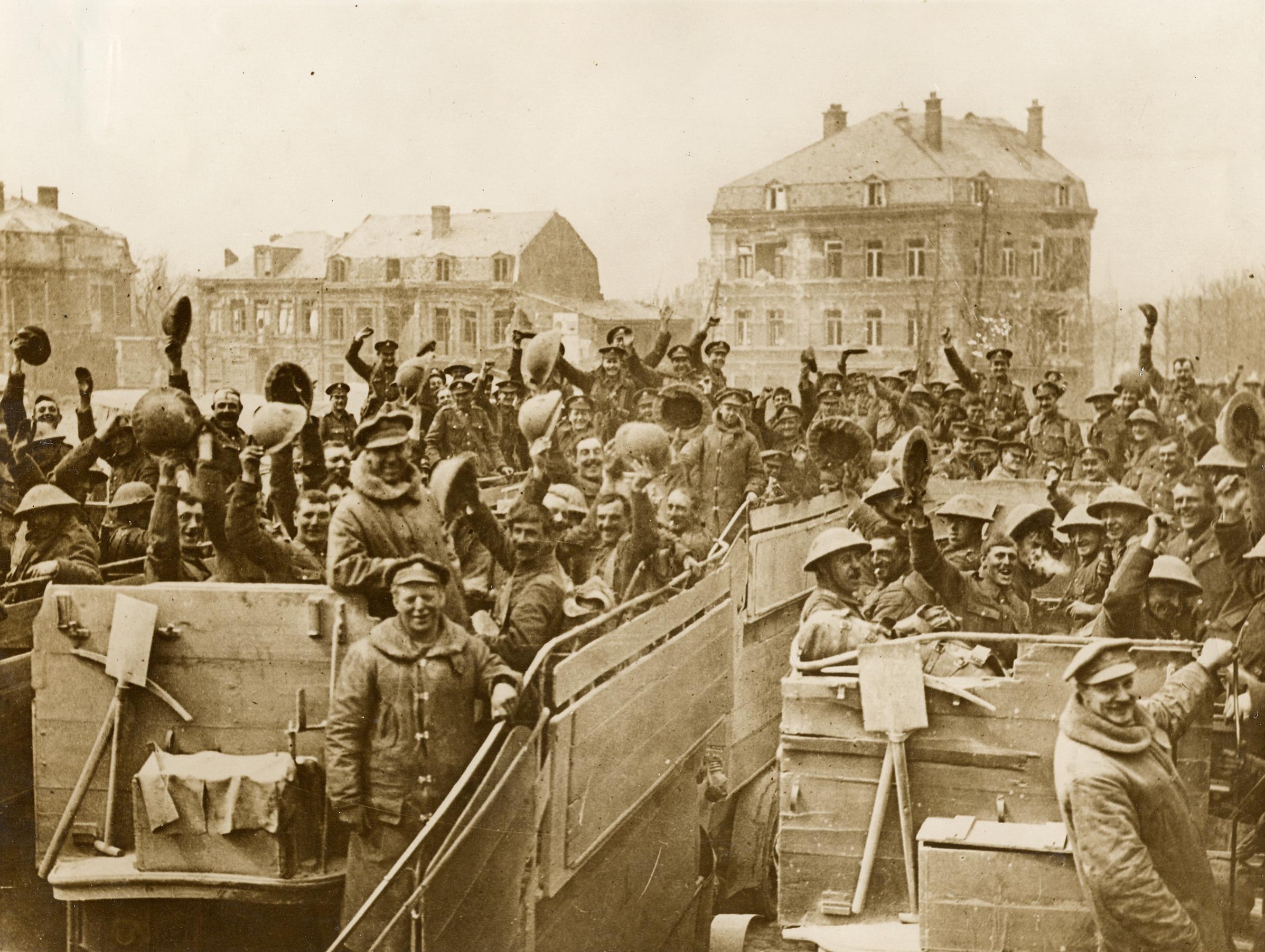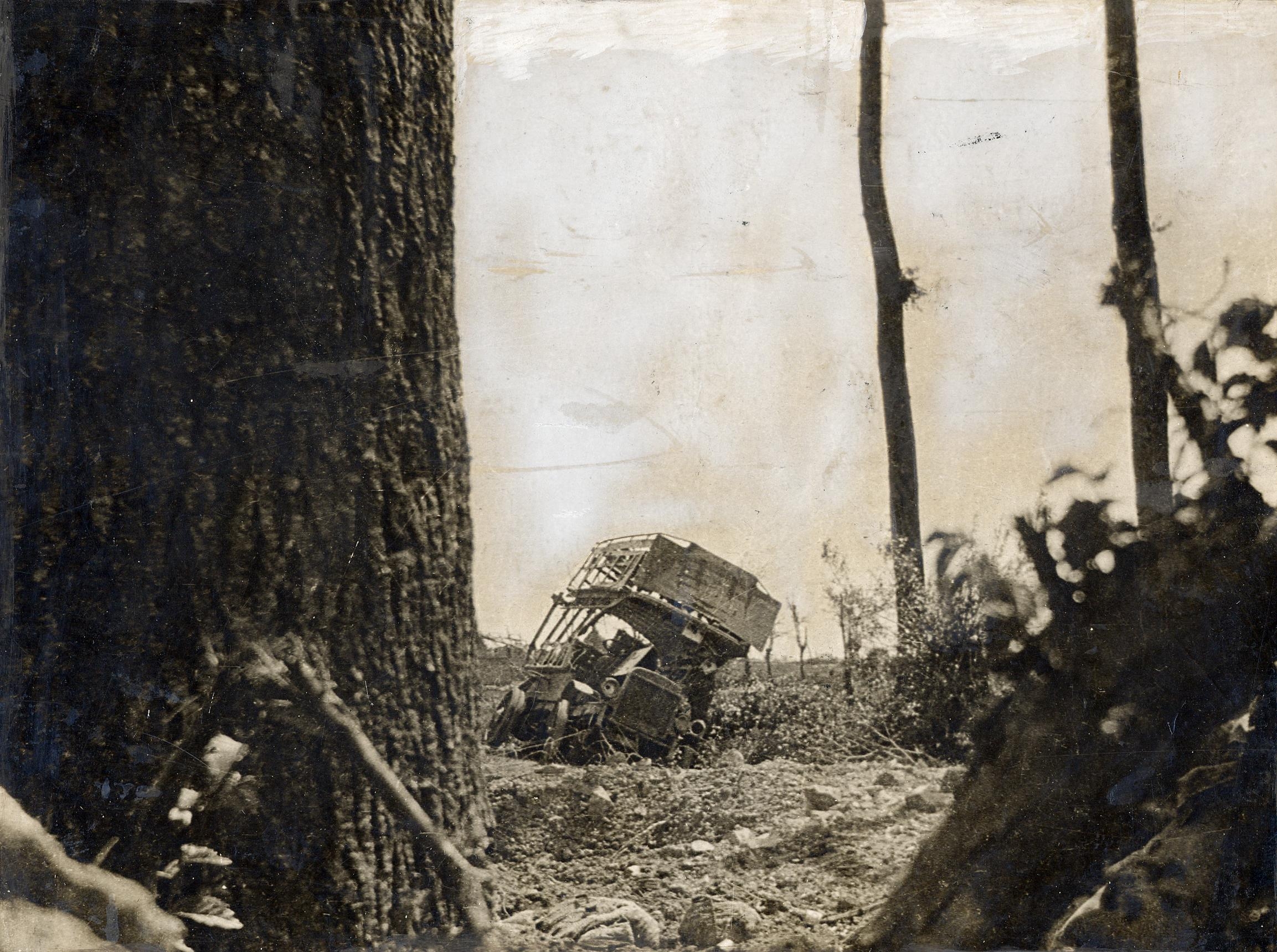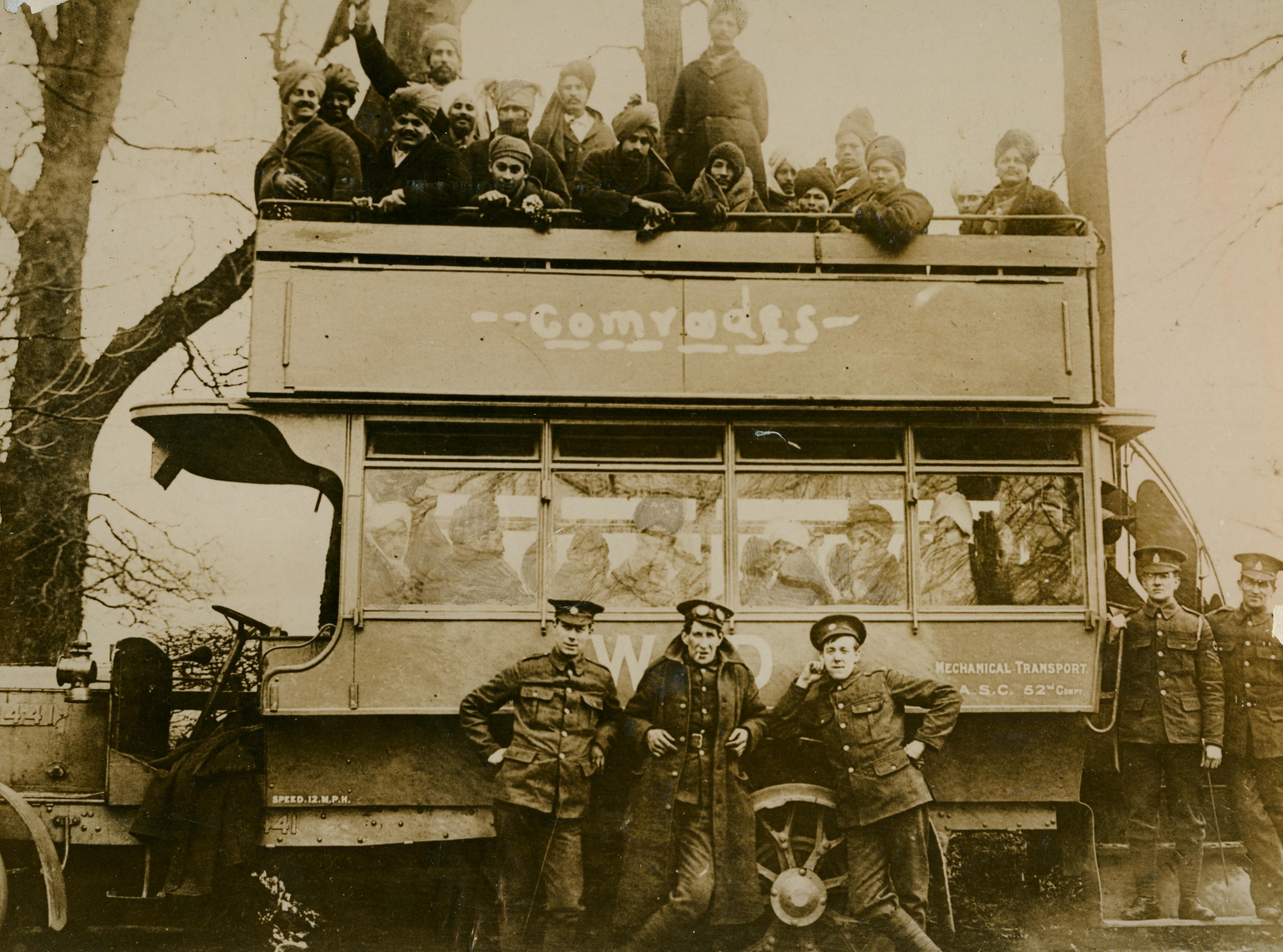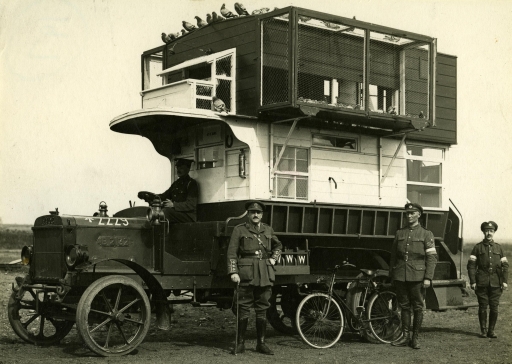A First World War London open-topped bus has been restored with the aim of returning it to the battlefields of France and Belgium in a “magical” Centenary tour.
Nearly 1,200 London buses were requisitioned by the British War Office for use at the Front.
The B-types served as troop carriers, ambulances, gun carriages, mobile workshops, lorries and even pigeon lofts. Most were used on the Western Front but they travelled as far as Egypt, Athens and Thessalonika.
Now, in a four year project backed by a £752,000 grant from the Heritage Lottery Fund, one of the battle buses has been restored to its original state and will serve as a tribute to the bus drivers, mechanics and transport workers abroad and at home who served in the war.
The bus, number B-2737, is one of only four known to still exist from the war 100 years ago. The B-types, introduced in 1910, were London’s first standardised, mass produced bus with an unprecedented level of reliability. Parts were interchangeable making for easy maintenance.
B-2737 is due to be unveiled to the public by the London Transport Museum next month and will take part in parades and events surrounding the museum’s “Year of the Bus” during the summer.
But in September it is planned to convert it into a khaki-coloured “Battle Bus” and drive it to places in France and Belgium where the London buses played an important role in moving troops about.
The B-types were boarded up, had their tops chopped off to convert them into lorries and around six were turned into pigeon lofts so messages could be sent along the Front.

Cheering troops on B-type converted buses at Arras, France 1917
A crowdsourcing fundraising project was launched this week to raise the £25,000 needed to pay for the tour.
Tim Shields, project manager for the restoration of the bus, told Centenary News: “Once we have converted it we will take it to key towns associated with the war where they had London buses working. I think it will be quite magical in a sense.”
Goodbye Piccadilly
The story of the London Battle Buses in the First World War forms part of a new major exhibition at the London Transport Museum in Covent Garden called Goodbye Piccadilly – from Home Front to Western Front which opens on May 16.
One of the B-type buses, B-43, is on show on loan from the Imperial War Museum.
The first London buses were commandeered by the British War Department on August 1 2014 – four days before war was declared.
Commanders had spotted their potential after the Boer War and there was already an understanding with the London General Omnibus Company that up to a third of the London bus fleet could be handed over in 24 hours, if necessary.
The first 30 single deck B-types were converted into ambulances. In October 1914 a further 300 Daimlers and B-types with drivers and mechanics were sent to France in such a rush they had to be painted army khaki when they arrived in Rouen.
Mr Shields said: “Although it was designed for London streets, which are rough in themselves with all the cobbles, that is nothing compared with the battlefields.
“Quite often they would get stuck in verges, some of them came under fire and others rattled themselves to bits.”
While they looked dainty, they were tall so often had to carry troops at night because they were such an easy target.

This one didn’t make it. A wrecked bus at St Eloi (now St Elooi), Belgium. A nearby cemetery was called Bus House Cemetery after it. It is hoped to visit the site on the tour in September.
A bus could carry 24 fully equipped men. Old film also shows the buses loaded with bicycles and with straw to keep the engines warm in winter.
The engines and chassis of the B-types were built at Walthamstow, east London, and the coaches in Islington.
The bus being restored was delivered to Mortlake bus station in 1914 and was driven along the Number 9 route to Liverpool Street station along famous landmarks like The Strand and Trafalgar Square.

The buses were a familiar site at the Front.
Mr Shields said: “It is an extremely original bus. In some restorations people use an engine which is similar but not quite right but we have an original engine and the chassis is original.
“There is an original body, the metal work is original but a lot of the wood has had to be replaced. It is a very, very authentic vehicle and has been very faithfully restored.”
Parts have been sourced from all over the world. Bits that are too damaged or missing have been re-made.
“We think it was requisitioned for the war department in late 1914, but we are not sure. Then in 1919 it was part of the fifth batch of buses to be returned by the War Department.
After the war B-2737 was used as an emergency vehicle for a short while before being withdrawn and sold.
“When they came back they were in a right mess they had really suffered so some had new bodies put on, others were repaired. A real mix match of attempts to keep them going, Mr Shields, said.
“The London economy was trying to get back on its feet and basically they cobbled together an emergency bus which is a very primitive form of vehicle not much more than a lorry with some seats in it and that was used as a very primitive bus service “
Some of the emergency buses only lasted a few months and most were gone in a year as the fleet was rebuilt.
Already there has been a lot of interest in the trip to France, Wesley Salton, museum head of development, said.
“The restoration has been funded but not taking the bus to France and Belgium. It is a social media campaign. It is very much encouraging members of the public to share the story about the proposed trip out to France and Belgium.
“The story around the bus is a fantastic one so we are hoping the crowdfunding is going to capture the public’s imagination. ”
People wanting to make a donation can find out more by clicking here:
Pictures courtesy of London Transport Museum.
Source and interviews London Transport Museum
